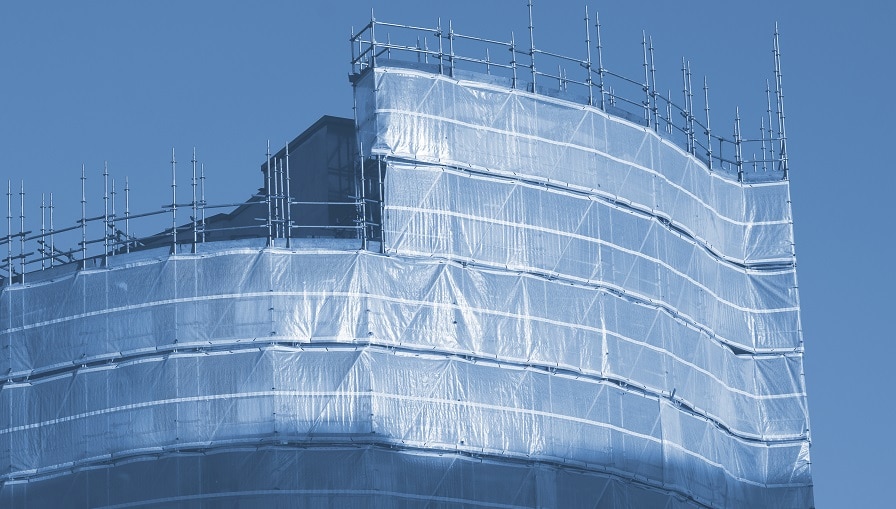If you work in construction, you are in one of the most dangerous, injury- and accident-prone industries. You are more at risk of workplace-related accidents than people employed in other sectors as a result of the nature of work done in construction. According to statistics recently released by the HSE, most workplace fatalities occur in the construction industry, with an average death rate of 30 annually.
This goes to demonstrate that the construction industry does suffer the highest accident rates. Admittedly, not all these incidents are fatal, however, it is still important that you take steps to protect yourself when you work in this industry. Compiled below are our 12 best tips on how you can avoid accidents and injury as a construction worker.
1. Keep away from operating machinery
It’s very normal for construction workers to cluster around a single area in between shifts. This can be dangerous if there is operating machinery nearby. While chances are nothing will happen, it is best to stay away from such locations and stay safe. Therefore, we suggest you stay away from operational machinery.
2. Inspect equipment and tools regularly
Your tools and equipment are vital to completing your tasks as a construction worker. Working with faulty or damaged tools is simply an accident waiting to happen. Make sure you conduct regular inspections on your equipment. Perform checks to identify defects so they don’t malfunction during use. Flagging faulty equipment should be a priority.
3. Always have PPE on
You must have the appropriate for your job Personal Protective Equipment (PPE) on at all times. Wearing the right protective equipment is a cheap and simple way to stay safe on construction sites. When accidents occur, your PPE is one of the first protections you will have. At the barest minimum, your PPE gear should include safety footwear, gloves, eye protection, safety helmets and hi-vis clothing.
Depending on what the job entails, you should also look into getting chemical suits and earmuffs for extra protection. The PPP at Work Regulations of 1992 will provide the vital details you need to know about the correct protective gear to wear on work sites.
4. Do not use damaged equipment
It’s not advisable to operate faulty equipment. You’re most vulnerable to injuries when you use malfunctioning equipment. It is not unusual for construction workers to use available equipment, even if it is not completely functional. Damaged parts such as frayed cables, cords, and harnesses can cause the operator serious injury.
5. Always lift objects properly
Backaches and headaches are the two major problems construction workers experience. Not only will they stop you from doing your job, but they are also inconvenient and can be very painful. To prevent this, it is important to avoid twisting from side to side while lifting objects and also remember to bend your knees. Also, holding one leg placed in front of the other is essential, so your body is balanced and you have more ground room to stand up from.
6. Report near misses and defects
Never dismiss issues or defects you come across on the worksite. Report all issues to your supervisor, so the problem gets the necessary attention. Resolving issues as they arise is critical for maintaining an accident-free work environment.
7. Keep work areas neat
Keeping a construction site super tidy may be impractical, but the possibility of an accident can be significantly minimised by simply putting away materials and equipment properly. Toxic materials, loose nails, debris and unattended tools lying around can cause accidents. A simple brick can cause severe injury if you trip over it while carrying heavy or hazardous materials. For this reason, walkways must be free of obstructions at all times
8. Complete health and safety training
If you are a construction worker, proper health and safety training is required for you. Know the dangers associated with your job, particularly if you work in confined spaces, at high altitude, or with heavy machinery. Basic first aid training is advised and will be useful to you. NEBOSH’s construction course offers extensive knowledge of health and safety measures to prevent accidents. Completing a course like this would help you stay safe as a construction worker.
9. Keep your first aid kit updated
You must regularly replace the items in your first aid kit to avoid using expired meds. Using expired items can worsen injury cases. Accidents can happen, especially in an accident-prone industry, like construction. An updated first aid kit helps you prepare for emergencies. You must have gauzes, bandages, painkillers, disinfectants and ointments in your kit.
10. Be careful when climbing off and on equipment.
One of the most common construction site injuries happens when a construction worker climbs off or on machinery. Before making the climb, we recommend you get mud cleaned off your boots and wear gloves so your grip is decent. Also, use a three-point stance that helps you maintain your balance. Don’t overextend your body or carry heavy items while mounting or dismounting equipment. One thing you should avoid the most is jumping off equipment.
11. Make use of technology
Technology has become an integral part of the modern world. Almost every adult in the UK has a mobile phone, and a lot of these phones are smartphones. Smartphones aren’t just for making calls or texting; they now come with applications for a myriad of functions. For example, the StaySafe app, which can be installed on your smartphone, can help you work in a safer and more efficient manner.
With panic buttons, man down and non-movement warnings, as well as low battery reminders, the StaySafe Software is ideal for accident-prone jobs. It’s the ideal monitoring system to ensure the safety of workers on site. StaySafe app also allows workers to share projects and risk assessments.
12. When in doubt – ask
You are better off safe than sorry. Even a tiny mistake on construction sites can be fatal. Talk to your supervisors or project foreman when you are confused or uncertain about something.














